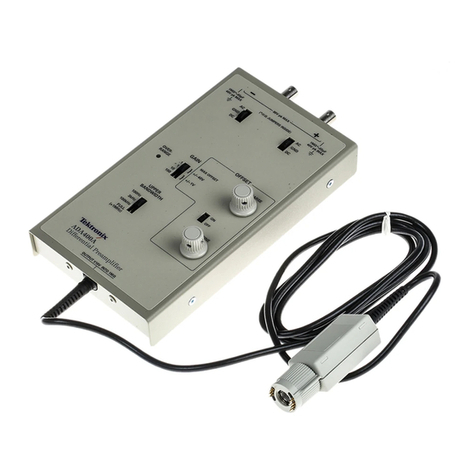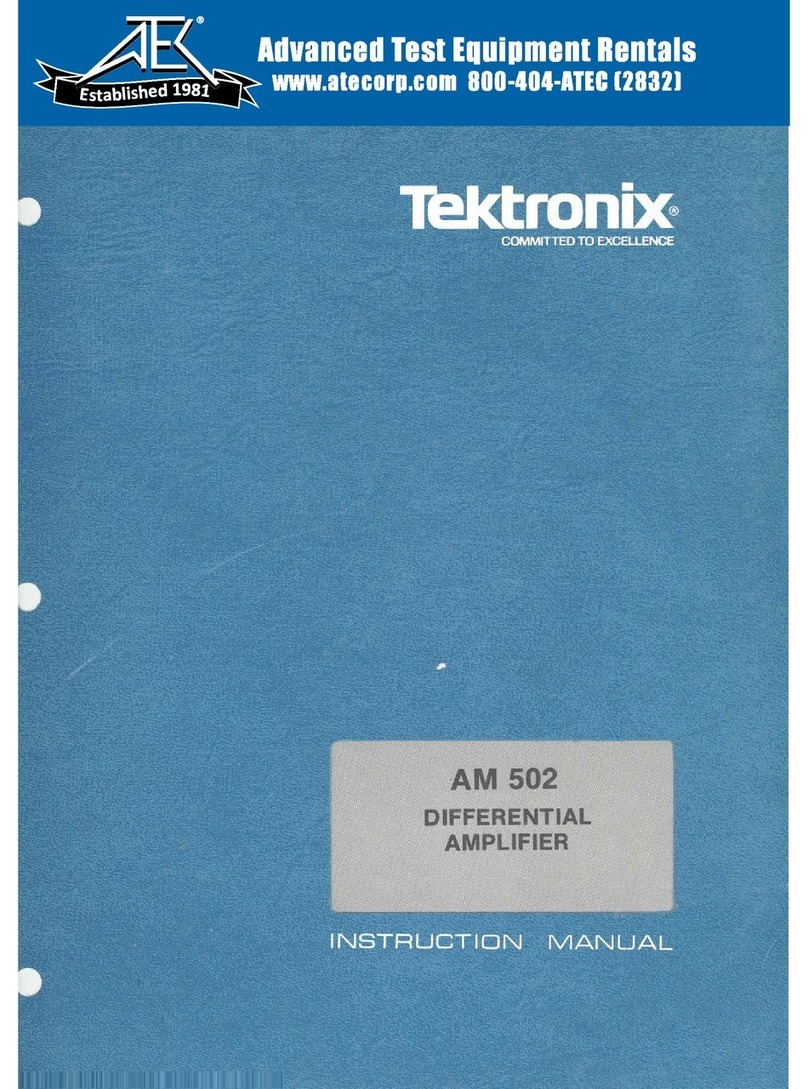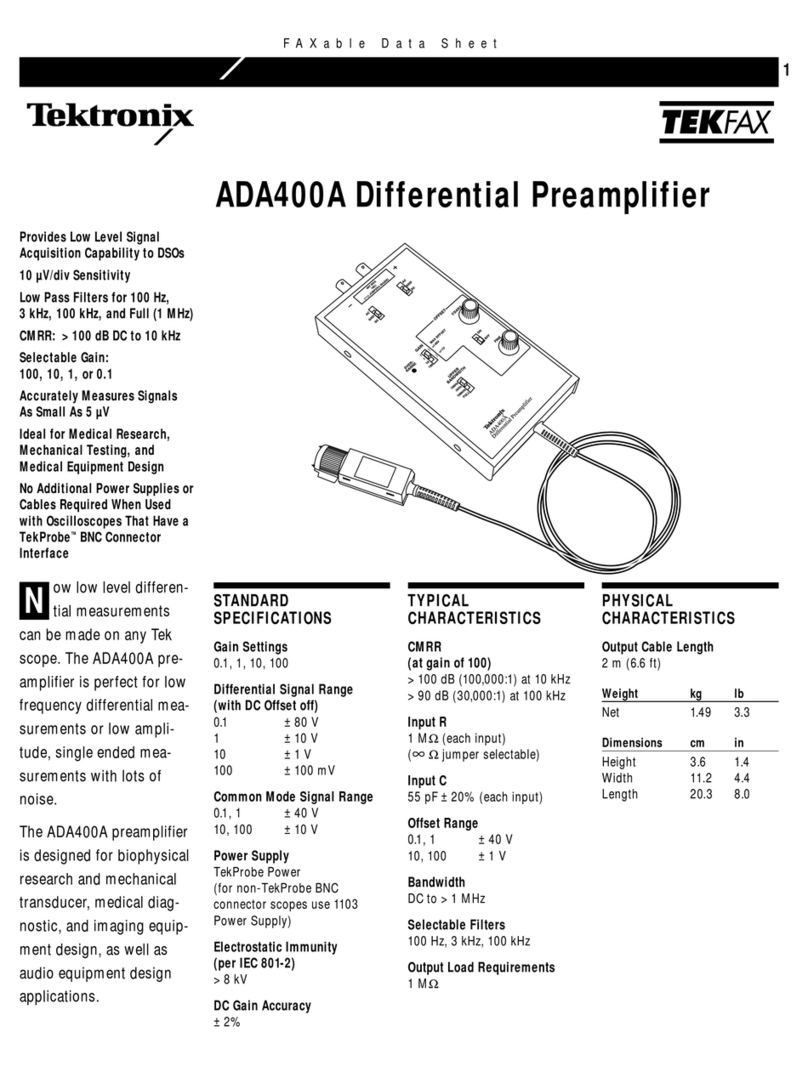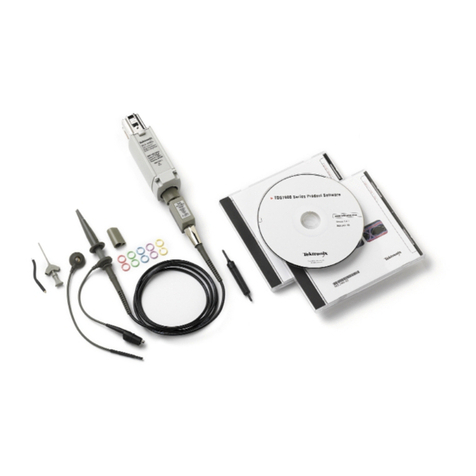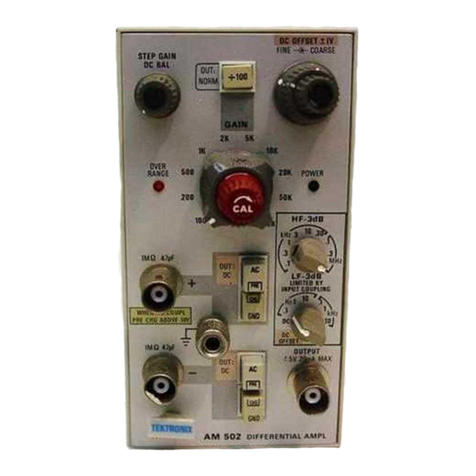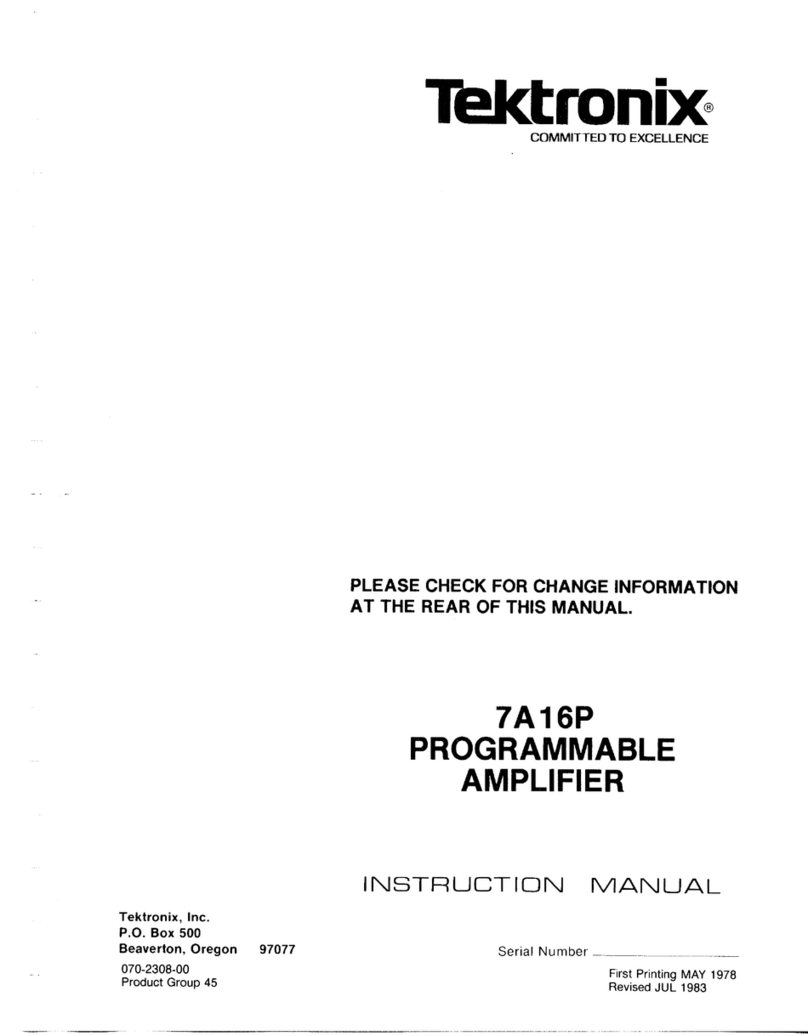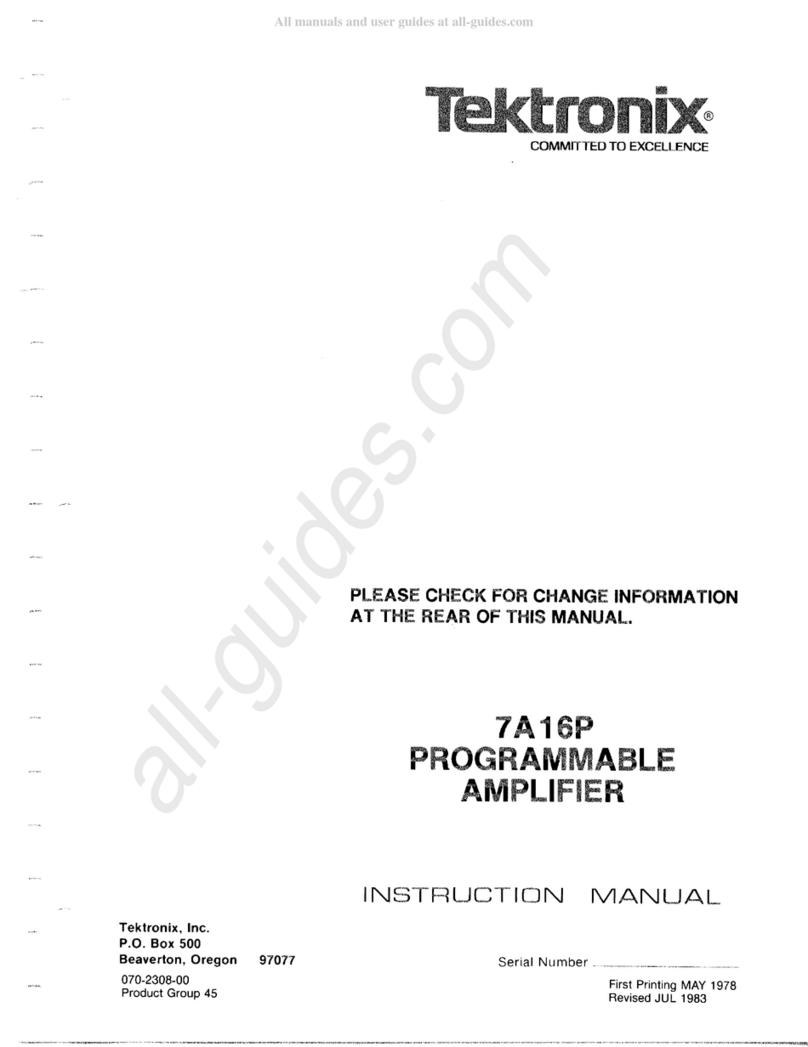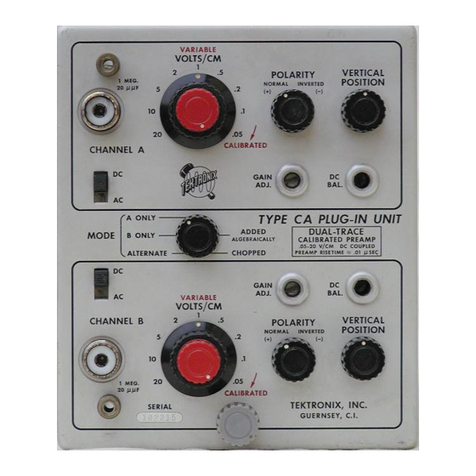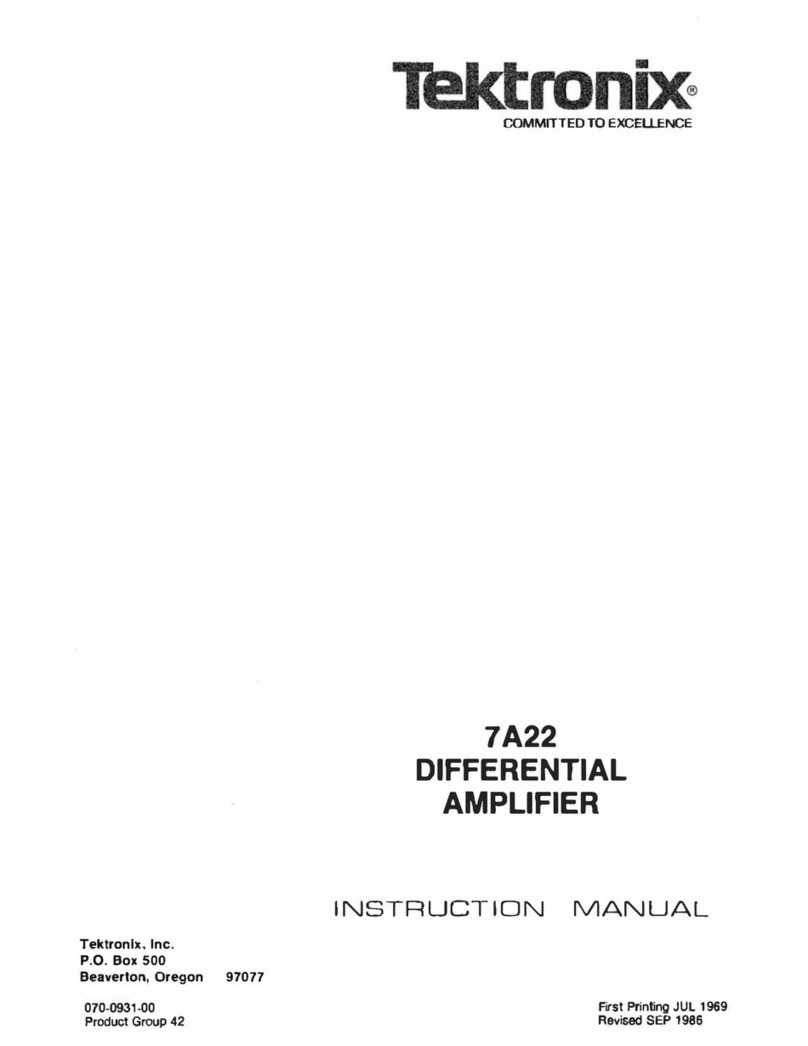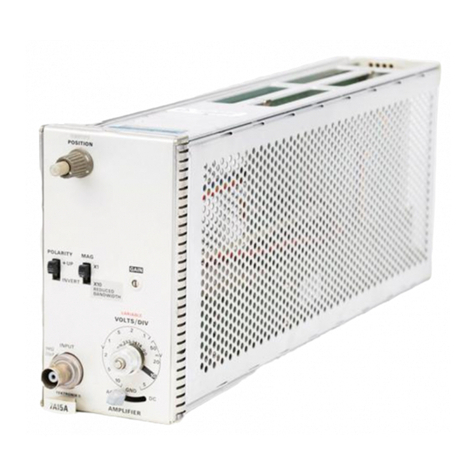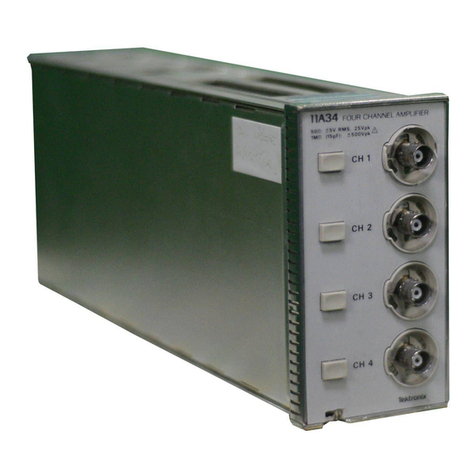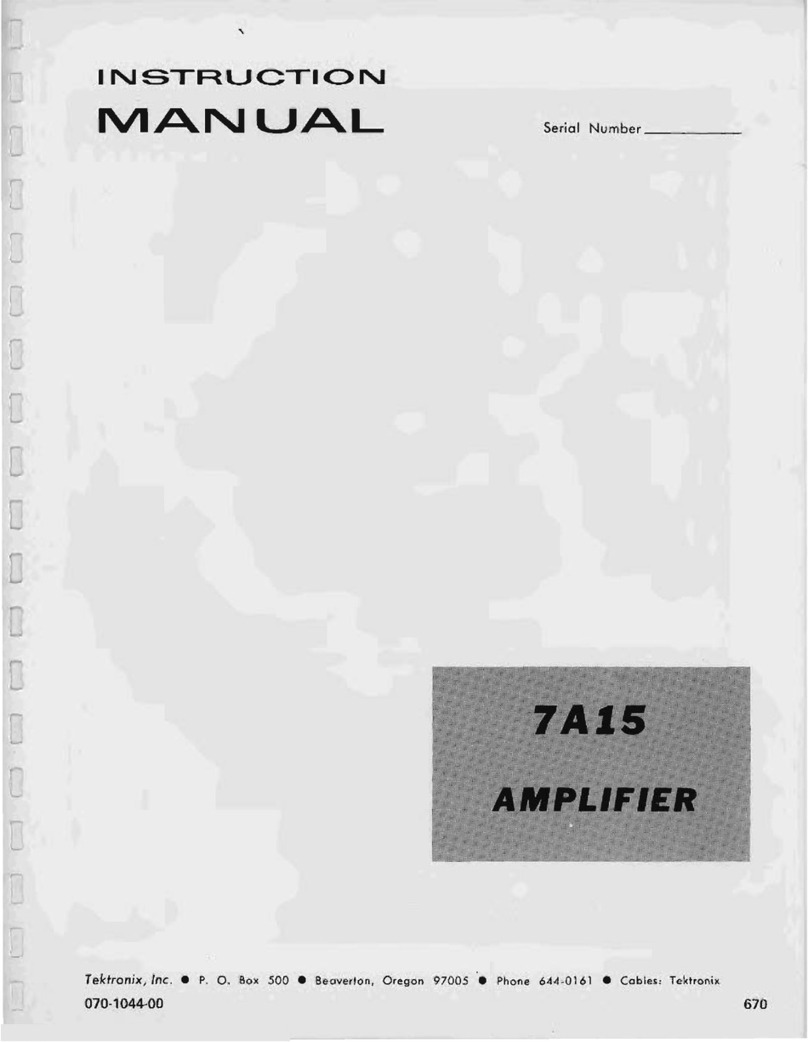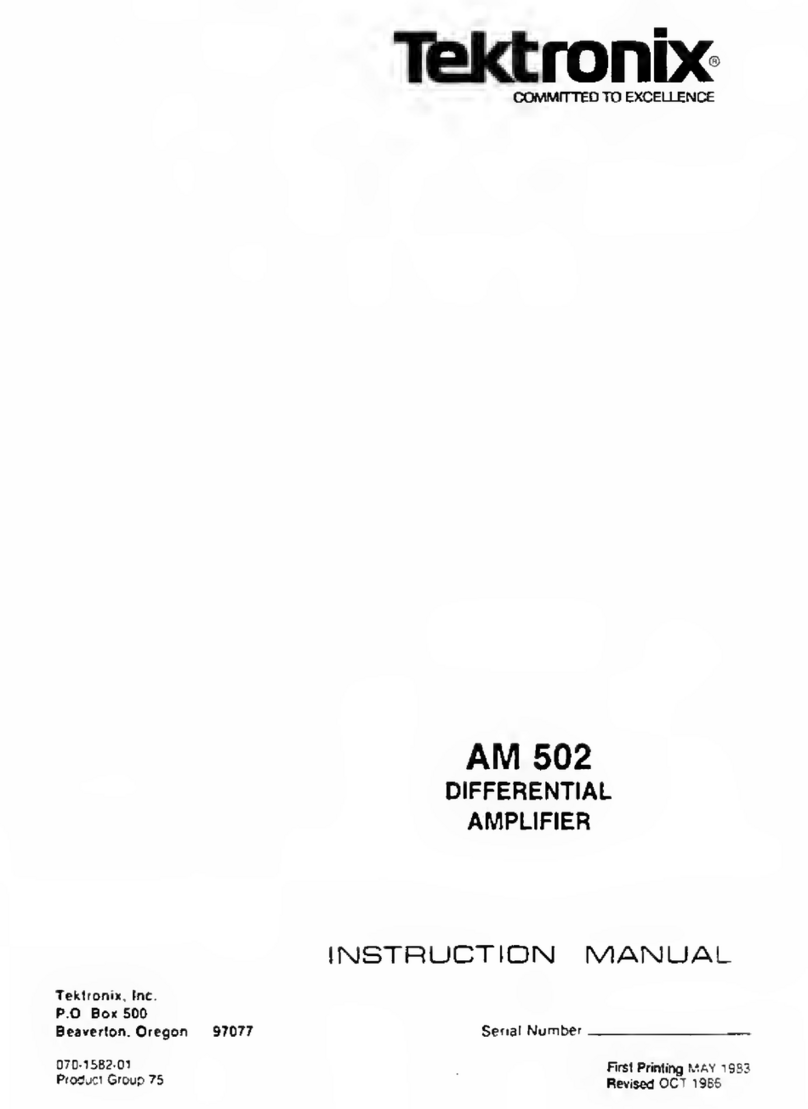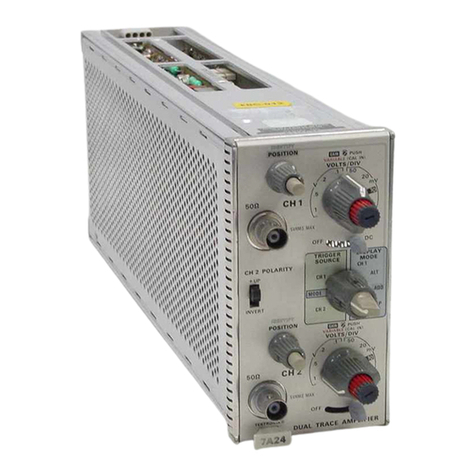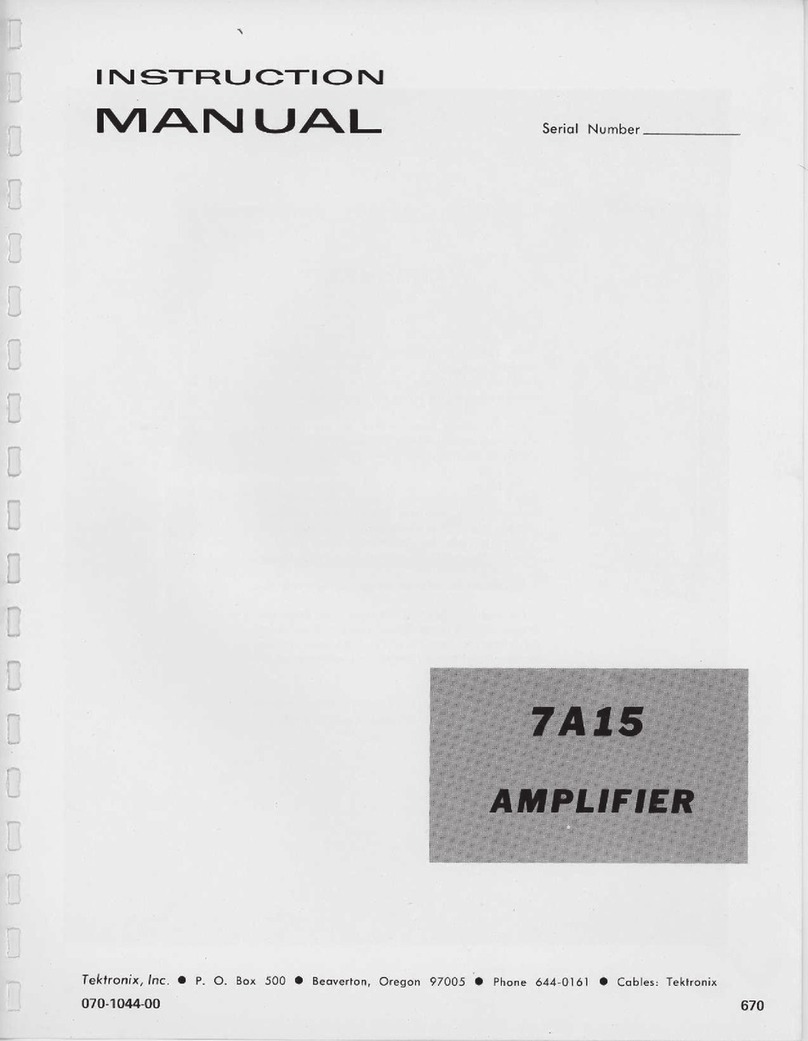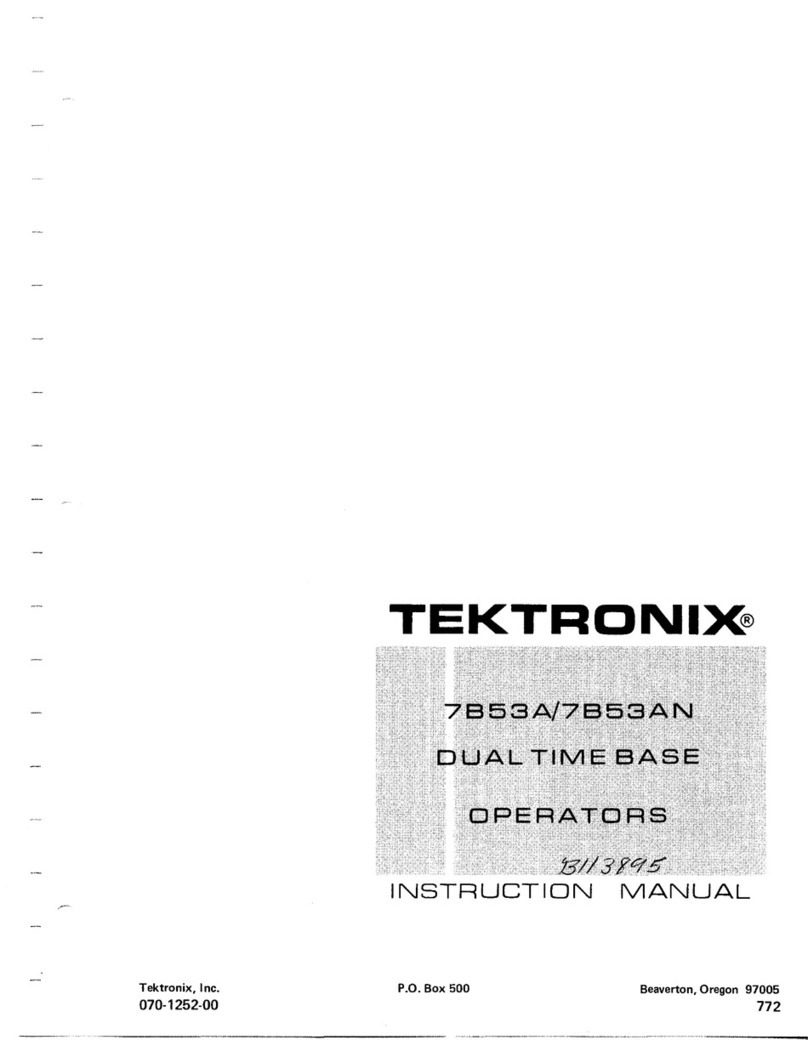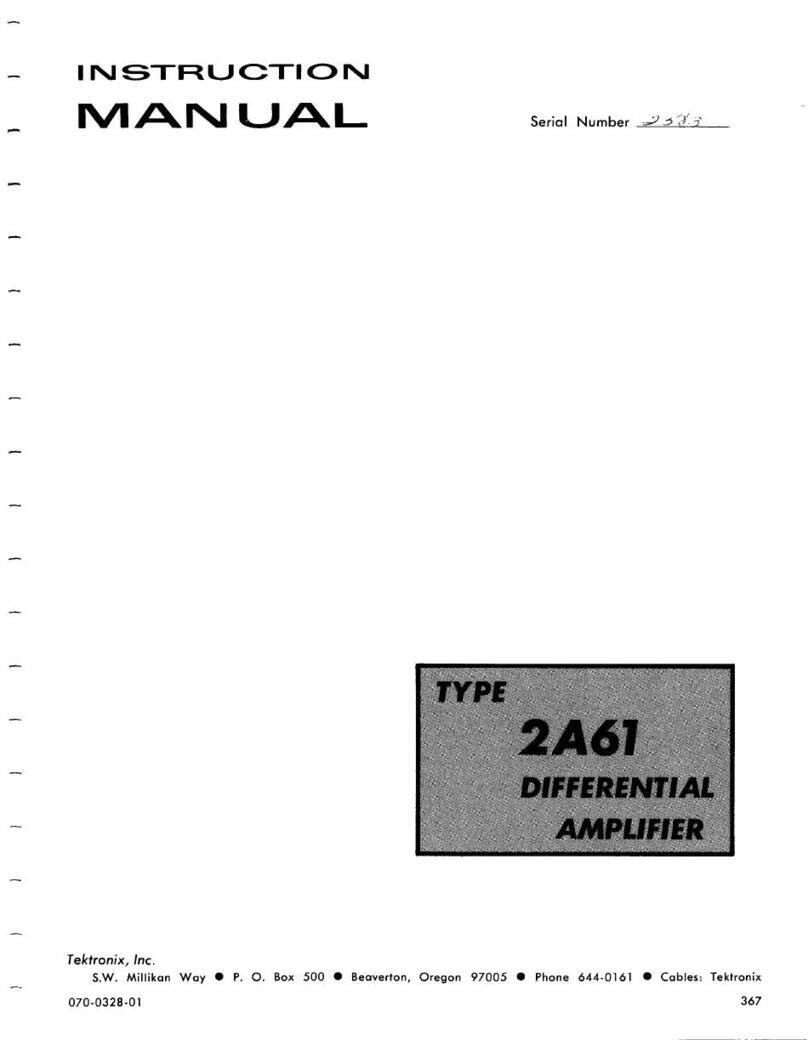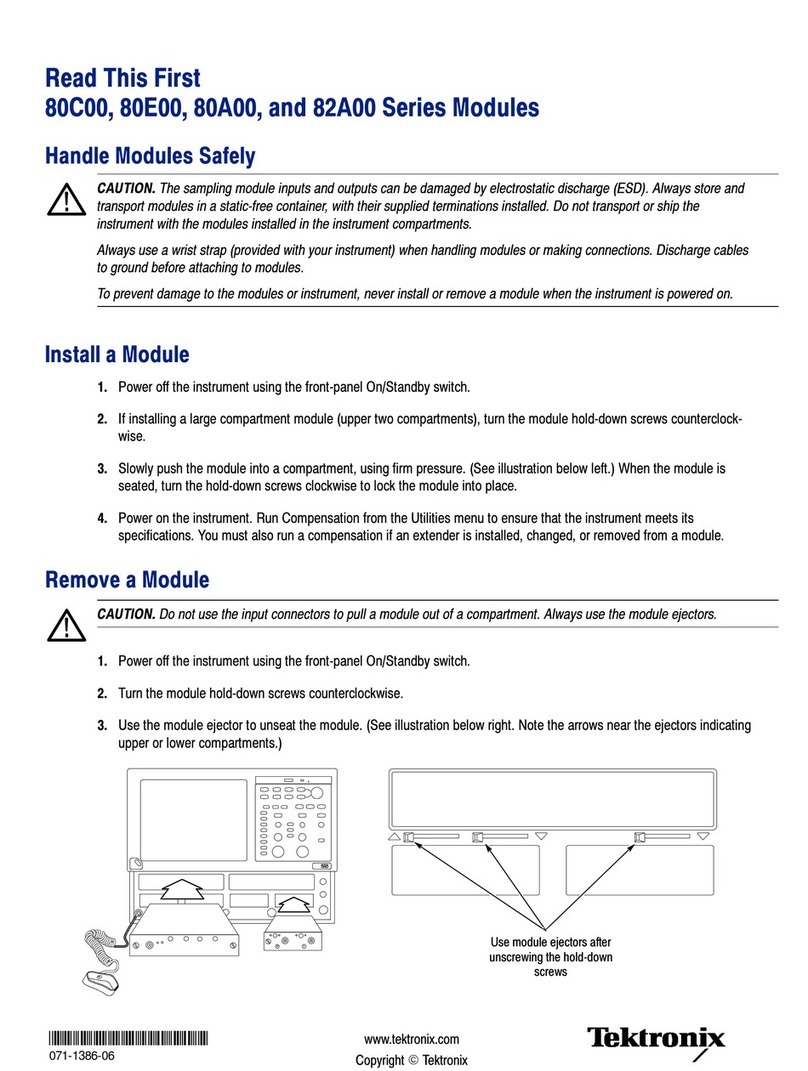
SECTION
1
Introduction
Changeinformation, ifany, affecting thissectionwillbe found at therear of rhe manual.
The 7A11 Amplifier is a versatile plug-inamplifier unit
which provides a DC to 150 MHz bandwidth with Tek-
tronix 7700-Series Oscilloscopes. When desired, the upper
frequency -3 dB point can be limited to 20 MHz by a
front-panelswitch.
Calibrated deflection factors of from 5 mV to 20 V per
division are provided in 1-2-5sequence. In addition, avari-
able gain control makes
it
possible to set the amplifier to
any deflection factor between 5 mV and 50V per division.
A permanently attached probe provides low-inputcapa-
citance (2.0 pF at 2 Vldivision, 5.8 pF at 5 mVldivision)
while maintaining high input resistance (1 Ma). BNC-
connectors can be attached to the probe through a probe-
tip to BNC-female adapter. This adapter serves as the
probe's input connector when the probe is stored, but can
be attached to the probe tip whether or not the probe
is
stored intheplug-inunit.
A 50 terminationladapter (standard accessory) per-
mits impedance matching for use of the probe in 50
environments. When the terminationladapter is used, alow
standing wave ratio (VSWR) can be expected. The VSWR
can be further reduced by insertinga 2X attenuator inthe
signal path ahead of the 50
St
terminationladapter. Approx-
imate values of VSWR which can be expected under both
conditionsare shown in Fig. 1-4.
The performancespecification of the 7A11 Amplifier is
described in detail in Table 1-1. The specification is valid
under thefollowing conditions:
Calibrationmust have been performed at an ambient
temperaturebetween +20°c and +30°c.
TABLE
1-1
7Al
I
Amplifier Specification
Characteristic
ELECTRICAL
Gain Ratio
Accuracy
Uncalibrated
PerformanceRequirement
DeflectionFactor
(VO
LTSID
I
V)
Calibrated Range
Within 2% of GAIN adjusted at 0.1
Vldiv
5 mVldiv to 20 Vldiv; 12 steps in
5,10,20 sequence
Continuously variable; extends de-
flection factor to at least 50 Vldiv
Permits adjustment of deflection
factor at 0.1 Vldiv for all Oscillo-
scopes
Frequency Response
(8Division Reference)
Bandwidth, Direct
Coupled Input
DC to 90 MHz with 7500-Series
Oscilloscope
FULLMode DC to 150 MHz with 7700-Series
Oscilloscope
20 MHz Mode
Risetime
1
2.4 ns or less with 7700-Series
DC to 20 MHzwithin
2
MHz
Capacitive Coupled
Lower Frequency
-3 dB Limit
1
oscilloscope
15 Hz or less
1
3.9 ns or less with 7500-Series
Operation must be within any specifiedenvironment,
in
a
calibrated Oscilloscope, after twenty minutes of
warmup.
REV.
MAR
1974
Risetime
(6
Div
Reference)
Oscilloscope
12011s or
less
5
mV-20Vldiv with
7904 oscilloscope.
